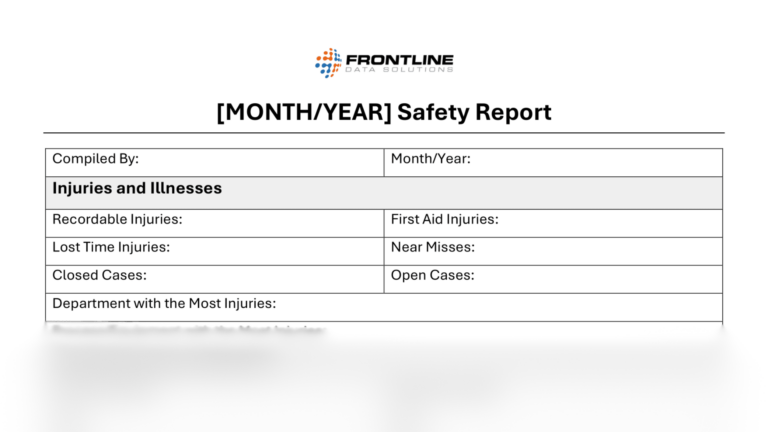Complacency kills EHS performance in many businesses, regardless of their industry or size. Regulatory requirements, processes, equipment, and personnel are constantly changing. And if you don’t adjust accordingly, your company’s health and safety risks will increase.
Signs of Complacency
Complacency refers to satisfaction with an existing situation or condition. But in health and safety, conditions never stay the same for too long. Think about it.
Every time you hire new employees, the risk level of the operation increases until they’re trained in their roles. When you install new equipment, it often triggers changes to processes and outputs.
But if you become too comfortable with the status quo, you can forget to account for these variables. Complacency kills in lots of different ways, here are some common signs:
- Company records have missing or inaccurate information
- Workers cut corners consistently
- Certain line items in the budget never change
- Policies and procedures are outdated and/or ineffective
- Workers don’t understand the why behind certain policies
- Managers fail to notice and correct issues in real time
- Employee engagement is low
Oftentimes, these issues occur when morale or motivation are low. And although none of these problems are likely to cause an incident, complacency can still have a big impact on operational risks and failures.
Free Template!
Download this free template to create a basic monthly safety report for your leadership team.
How Complacency Kills Safety
Situational awareness is critical to workplace safety. Without it, workers are unable to react to hazards in real time. This makes them much more vulnerable to injuries and incidents.
Oversight of safety procedures: When employees get too used to a process or procedure, they may begin to miss steps on accident or skip them on purpose. For things like lockout tagout procedures, hazard communication, or machine guarding, this can cause serious safety issues.
Improper use of equipment: Complacency may cause workers to cut corners and use equipment improperly. Whether that’s heavy machinery or PPE, incorrect equipment use can greatly increase injury risks.
Less situational awareness: Over time, workers get into a rhythm that can reduce their situational awareness. Without dedicated focus on the task at hand, they may develop unsafe behaviors and habits.
False sense of security: In general, complacency can create a false sense of security. But just because the existing conditions haven’t caused an issue yet, doesn’t mean they can’t in the future. Workers can underestimate the severity of the risks they deal with every day if they’re too used to them.
Aside from these effects to workplace safety, complacency also impacts other areas of EHS performance including:
- Compliance documentation
- Employee training experience
- Records management practices
- EHS department morale
- Safety policy enforcement and effectiveness
- Building security
The good news is that complacency is a mindset that you can eliminate rather quickly with the right strategy.
Reinvigorating Your EHS Program
If you find that you’ve become complacent and stuck in your ways, it’s time to reinvigorate your EHS program. Start by doing a full internal audit of your team’s performance:
- What are you doing well?
- What do you struggle with the most?
- Have there been any recent performance failures?
- What is the current workload like for your team?
- When was the last time you updated safety procedures?
- How engaged are frontline workers in the EHS program?
- Do you have any ongoing compliance issues?
Answering these questions will help you figure out where you’re becoming too complacent. Once you have that information, you can work on getting some energy back into your EHS program.
Preventing Complacency from Killing Performance
Here are some of the top ways to make sure complacency doesn’t kill your team’s progress towards safety excellence:
- Conduct refresher training on high-priority topics within your facility.
- Start a new incentive program for reporting safety concerns.
- Schedule recurring audits of safety procedures, equipment, etc.
- Create a recognition program to encourage proactive safety behaviors.
- Get employees involved in a site safety committee.
- Overhaul your hazard communication strategy (e.g., signage, reminders, alerts).
- Investigate each near miss as if it was a recordable incident.
- Start every meeting with a discussion about safety.
- Retrain managers in proper ways to spot and correct unsafe work conditions.
- Frequently audit employee adoption of safety policies and procedures.
- Require managers to conduct and document daily safety walkthroughs.
- Implement changes using a formal change management process.
Complacency kills a lot more than just safety performance. It can have a major effect on morale, engagement, and retention—making it much more difficult to develop a strong safety culture.
The best way to avoid these issues is to make workers think critically about safety, rather than having them check off boxes on a list of required tasks. Over time, a proactive approach to everyday safety performance is the only strategy that will stave off complacency and foster engagement.





